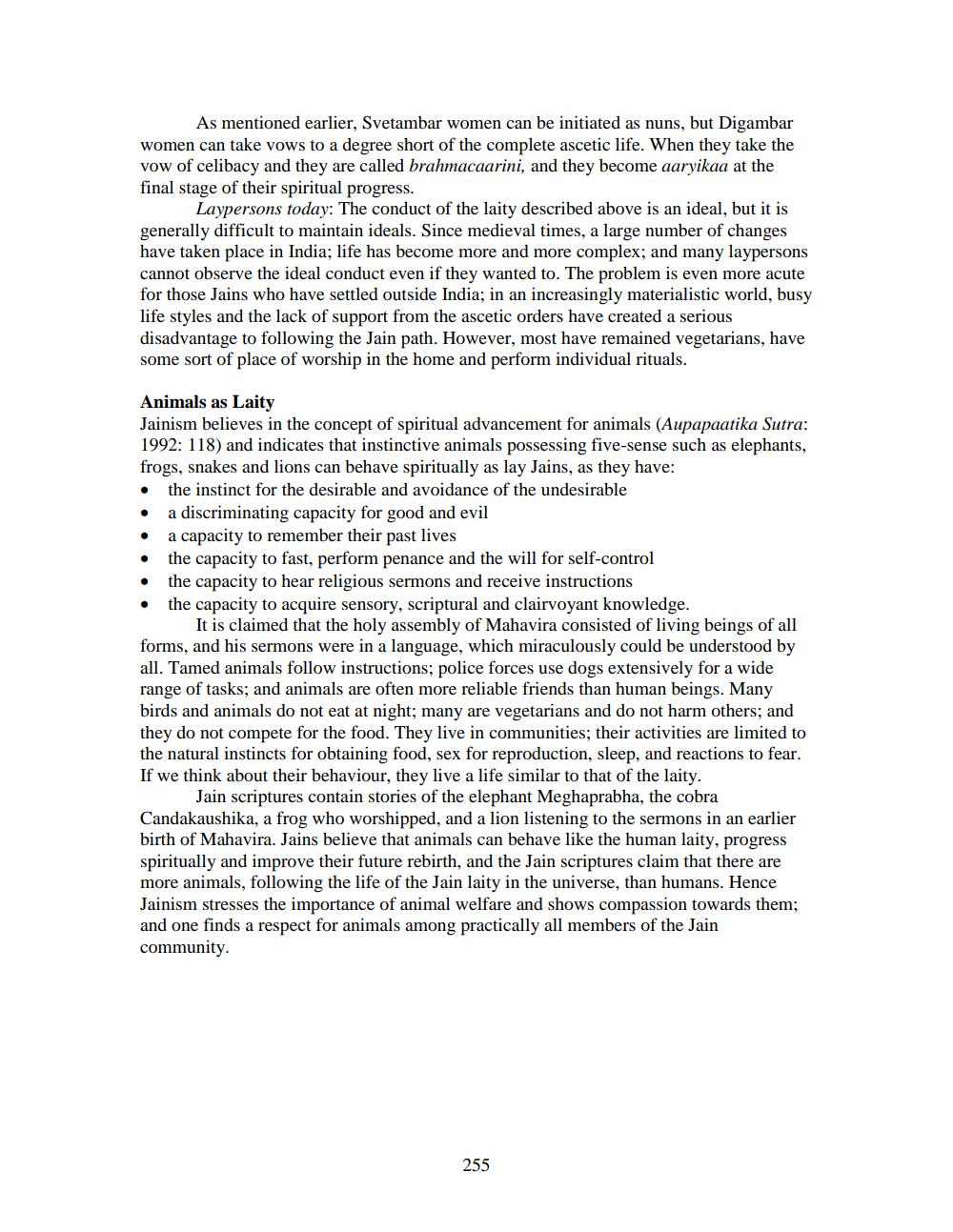________________
As mentioned earlier, Svetambar women can be initiated as nuns, but Digambar women can take vows to a degree short of the complete ascetic life. When they take the vow of celibacy and they are called brahmacaarini, and they become aaryikaa at the final stage of their spiritual progress.
Laypersons today: The conduct of the laity described above is an ideal, but it is generally difficult to maintain ideals. Since medieval times, a large number of changes have taken place in India; life has become more and more complex; and many laypersons cannot observe the ideal conduct even if they wanted to. The problem is even more acute for those Jains who have settled outside India; in an increasingly materialistic world, busy life styles and the lack of support from the ascetic orders have created a serious disadvantage to following the Jain path. However, most have remained vegetarians, have some sort of place of worship in the home and perform individual rituals.
Animals as Laity Jainism believes in the concept of spiritual advancement for animals (Aupapaatika Sutra: 1992: 118) and indicates that instinctive animals possessing five-sense such as elephants, frogs, snakes and lions can behave spiritually as lay Jains, as they have:
the instinct for the desirable and avoidance of the undesirable a discriminating capacity for good and evil a capacity to remember their past lives the capacity to fast, perform penance and the will for self-control
the capacity to hear religious sermons and receive instructions • the capacity to acquire sensory, scriptural and clairvoyant knowledge.
It is claimed that the holy assembly of Mahavira consisted of living beings of all forms, and his sermons were in a language, which miraculously could be understood by all. Tamed animals follow instructions; police forces use dogs extensively for a wide range of tasks, and animals are often more reliable friends than human beings. Many birds and animals do not eat at night; many are vegetarians and do not harm others; and they do not compete for the food. They live in communities; their activities are limited to the natural instincts for obtaining food, sex for reproduction, sleep, and reactions to fear. If we think about their behaviour, they live a life similar to that of the laity.
Jain scriptures contain stories of the elephant Meghaprabha, the cobra Candakaushika, a frog who worshipped, and a lion listening to the sermons in an earlier birth of Mahavira. Jains believe that animals can behave like the human laity, progress spiritually and improve their future rebirth, and the Jain scriptures claim that there are more animals, following the life of the Jain laity in the universe, than humans. Hence Jainism stresses the importance of animal welfare and shows compassion towards them; and one finds a respect for animals among practically all members of the Jain community.
255




